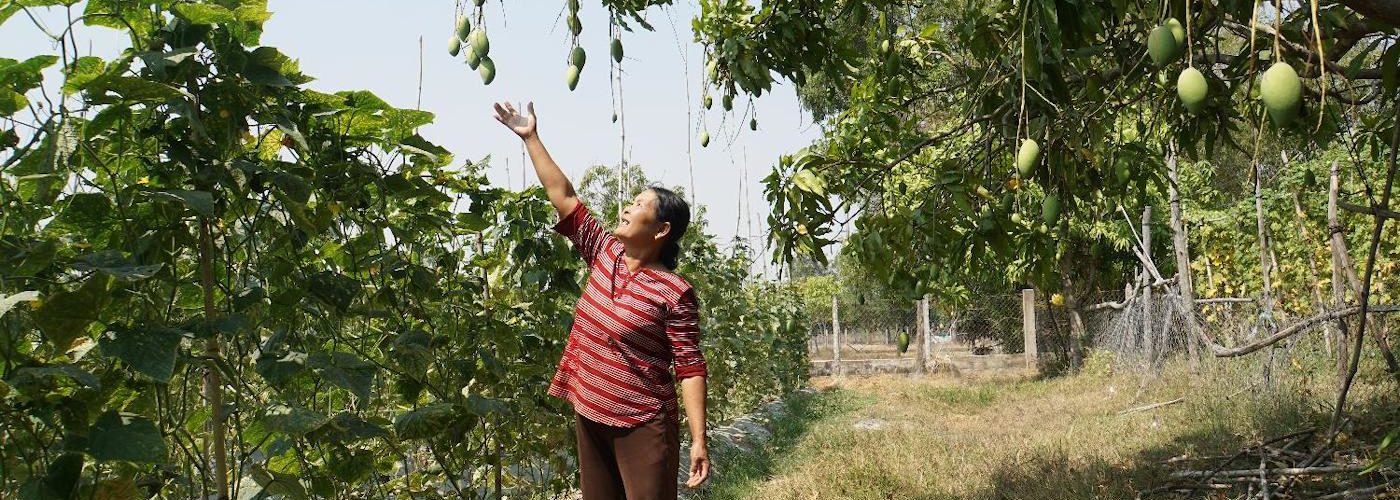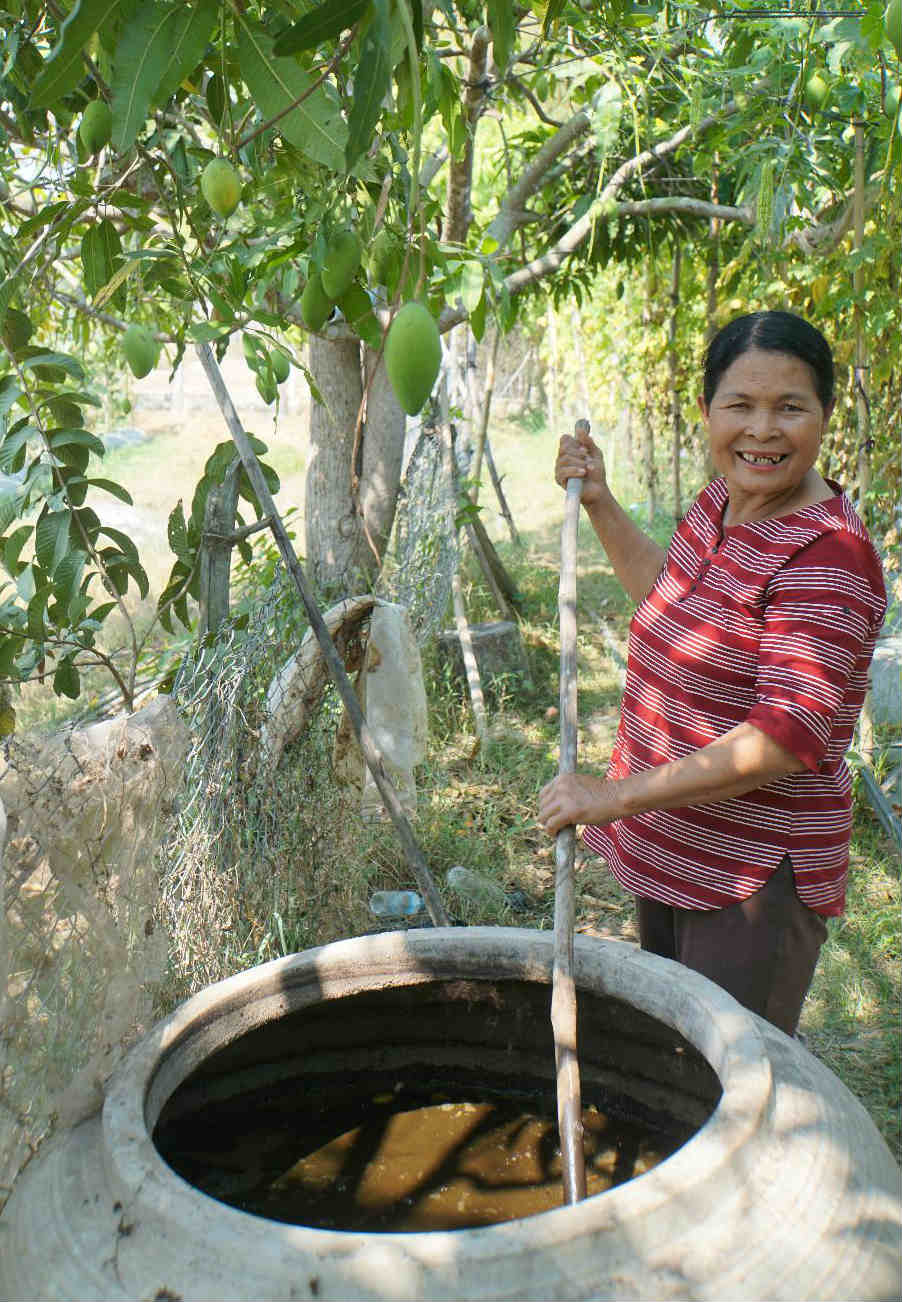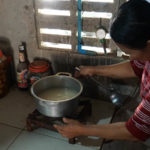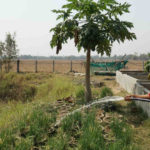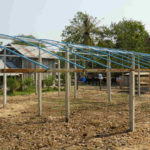ThatOun Kom lives with her family of four in Ponleu village in Takeo Province, Cambodia. She has some livestock and owns a small plot where she cultivates rice. Back in 2007 she didn’t have access to the main electricity grid so she used firewood for cooking and kerosene lamps for lighting.
A sudden change for the better
Her life changed drastically when she was introduced to the National Biodigester Programme (NBP) Cambodia. With their help, and the support of the Hivos Klimaatfonds (Hivos Climate Fund), she received a subsidy of 100USD to install a biogas plant. Oun was one of the first customers of the NBP, and so became one of the first in her community to enjoy the benefits of biogas.
Although her biogas plant is small (4m3), she suddenly had enough gas to cook and light her house.
Discovering the other benefits of biogas
In 2016, Oun’s house was connected to the national electricity grid, and the urgency of using biogas for lighting faded. But she had already discovered the other benefits of having a biodigester. The left over bioslurry is an excellent fertilizer, and she was using it directly in her rice field. A few years after getting the biodigester, Oun installed a compost hut to enrich the bioslurry by adding agricultural waste, turning it into compost. She now uses the liquid bioslurry as a direct fertilizer and compost for longer term soil improvement. As she puts it, “bioslurry use has become more perfect each time.”
From rice to vegetables to fish to ….
One thing led to another, and Oun started growing vegetables as well as rice. She now earns three times more per square meter of land growing a different vegetable each season, from melons to cucumbers to cabbage. And Oun has started using bioslurry to fertilize her fish pond, which has helped her earn even more extra income.
This has all allowed her to invest in a solar water pump that she uses both to irrigate and pump liquid bioslurry onto her vegetable fields.
So, what’s next for the entrepreneurial Ms Oun Kom? She wants to expand her farm and would like to raise more chickens. She also has high hopes that others in her community will follow her example and install biodigesters. “Of the 248 families in this community, half of them have cattle or pigs and could run a biodigester with the manure. I want to do more on promotion so that more people can benefit from biogas and bioslurry,” she says.
Hivos and biogas
Hivos focuses on renewable energy projects that benefit low-income groups, like providing domestic biogas and promoting sustainable agricultural practices. That is why we have supported the NBP Cambodia with the design of a carbon verification project and helped them submit it to the Gold Standard. After that, each year greenhouse gas emission reductions are verified to create the carbon credits which are sold to individuals and companies wanting to offset their CO2 emissions. With the income from carbon credit sales, the NBP Cambodia subsidizes families who install biodigesters, and supports program activities like aftersales services, quality management, staff capacity building and end-user training.
The figures are inspiring
To date, NBP Cambodia has installed over 27,000 biodigesters, reducing some 760, 000 tons of CO2 emissions. This has helped close to 21,000 households in Cambodia increase their crop yields and income by using bioslurry. And last but not least, 257, 000 tons of wood has been saved since the start of the program. For more inspiring facts and figures, see the website of Hivos Carbon Credits.

